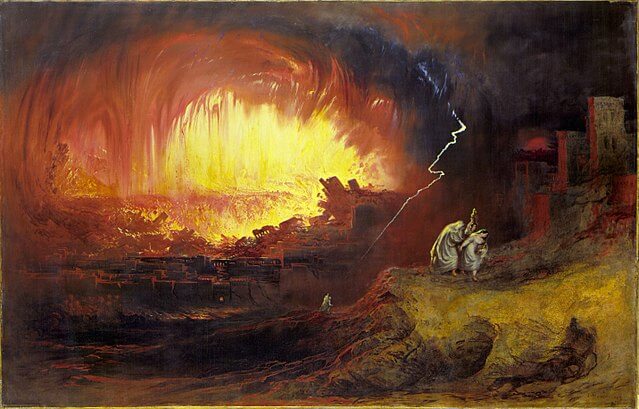Deborah Hurn | Patterns of Evidence
Summary: Numerous media reports have recently claimed the biblical city of Sodom was located north of the Dead Sea and destroyed by a ‘cosmic airburst’ from a meteor. Part 1 of this 2-part update examines these proposals more closely.
New Evidence for the Destruction of Sodom?
On September 20, 2021, the open access journal Scientific Reports published a paper by a team of twenty-one scientists led by Ted Bunch of Northern Arizona University. The paper is entitled “A Tunguska Sized Airburst Destroyed Tall el‑Hammam a Middle Bronze Age city in the Jordan Valley near the Dead Sea”.[1] Tunguska in Siberia is where, in 1908, a massive blast flattened some 2000 square kilometers of uninhabited forest. No crater was discovered, so scientists explain the strange phenomenon as the result of a meteor explosion some 5-10 km above land.
Tall al-Hammam,[2] the subject of the above paper, is a large city-mound on the eastern side of the southern Jordan Valley in the modern state of Jordan. Bunch and his coauthors make the case that the ancient town was destroyed in a cosmic airburst above the northern basin of the Dead Sea.
Intriguingly, the paper cites the Bible as possibly containing a written record of the destruction: “We consider whether oral traditions about the destruction of this urban city by a cosmic object might be the source of the written version of Sodom in Genesis.”[3] This sensational proposal tying cosmic science to biblical history led to the paper being widely featured and discussed across many media outlets.[4]
Since 2005, archeologist Steven Collins at Trinity Southwest University has been director of excavations at Tall al-Hammam. Within a few years, Collins was confidently identifying the tell as the biblical city of Sodom,[5] and, by 2014, proposing its destruction by meteor.[6]
According to the biblical narrative of Abraham’s life-story, God destroyed Sodom and three neighboring towns in a fiery cataclysm because of their godless lifestyle (Gen. 18:20-21; 19:24-25).





